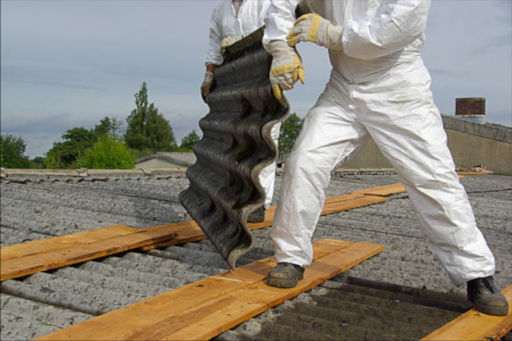Asbestos fibers associated with health risks are too small to be seen with the naked eye. Breathing asbestos fibers can cause a buildup of scar-like tissue in the lungs called asbestosis and result in loss of lung function that often progresses to disability and death. Asbestos also causes cancer of the lung and other diseases such as mesothelioma of the pleura which is a fatal malignant tumor of the membrane lining the cavity of the lung or stomach.
All forms of asbestos are carcinogenic to humans.
All forms of asbestos are carcinogenic to humans. Exposure to asbestos, including chrysotile, causes cancer of the lung, larynx, and ovaries, and also mesothelioma (a cancer of the pleural and peritoneal linings). Asbestos exposure is also responsible for other diseases such as asbestosis (fibrosis of the lungs), and plaques, thickening and effusion in the pleura.
Currently, about 125 million people in the world are exposed to asbestos at the workplace. Approximately half of the deaths from occupational cancer are estimated to be caused by asbestos. In addition, it is estimated that several thousand deaths annually can be attributed to exposure to asbestos in the home.
Children are more vulnerable to asbestos than adults over their lifetime.
Mesothelioma is extremely rare in children and young adults because the cancer typically develops decades after exposure to asbestos. By the same note, a five-year-old is five times more likely than an adult of 30 to develop mesothelioma, a type of cancer linked to asbestos, if they are exposed to it at the same time. This is because a child will normally live longer and have more time for the disease to develop,
Potential sources of childhood exposure to asbestos:
- Second hand exposure from a parent who worked with asbestos
- Asbestos in schools
- Environmental asbestos (breathing the air or playing in or eating contaminated soil)
- Asbestos in toys such as chalk, crayons and modeling clay
Elimination of asbestos-related diseases
Elimination of asbestos-related diseases should take place through the following public health actions:
- recognizing that the most efficient way to eliminate asbestos-related diseases is to stop the use of all types of asbestos;
- replacing asbestos with safer substitutes and developing economic and technological mechanisms to stimulate its replacement;
- taking measures to prevent exposure to asbestos in place and during asbestos removal (abatement), and;
- improving early diagnosis, treatment, social and medical rehabilitation of asbestos-related diseases and establishing registries of people with past and/or current exposures to asbestos.
